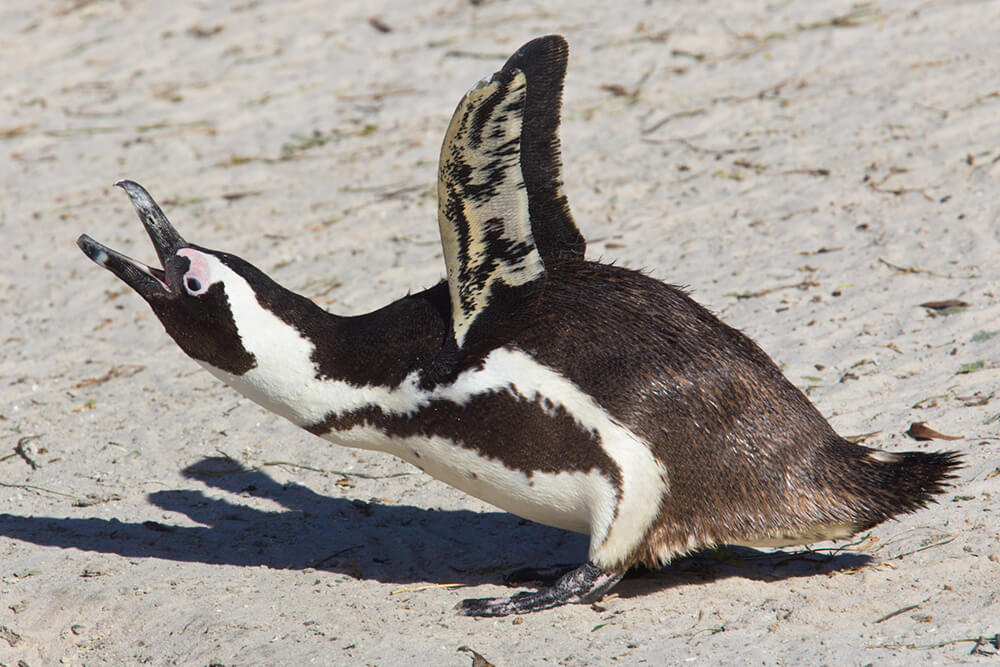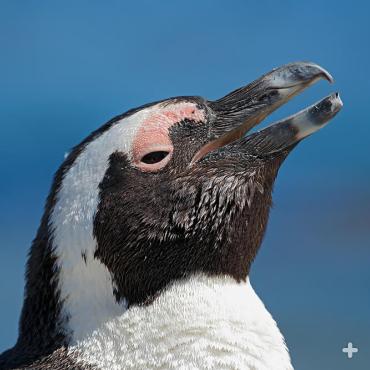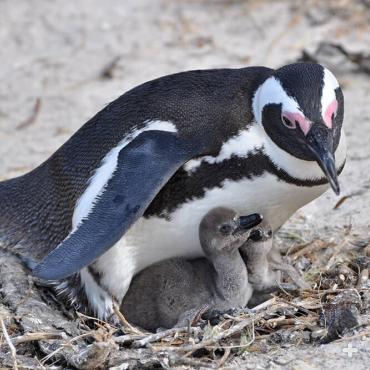African Penguin
Black and white and cute all over. While the African penguin may not be found in freezing temperatures, they are covered in an array of black, white, and gray dense, waterproof feathers that keep them dry and warm in the cold waters off the African coast. They also have a number of dot-like markings flecked across their white chests. These flecks help to individualize each penguin, as each penguin’s feather pattern is as individual as a human’s fingerprints. African penguins have a distinct, sharply pointed beak and black feet. The African penguin is one of the smallest penguin species. Males are generally slightly larger than their female counterparts.

African penguins communicate with one another through vocalizations and body language. Each individual has its own unique vocalization that distinguishes it from the others. They use three different types of calls: a bray, used to attract a mate; the yell, used to defend their territory; and the haw, used by mates to locate each other when one is on land and one is at sea. When a penguin is feeling aggressive, it communicates through body language like gaping, pointing the bill, pecking, and bill-jabbing.
One of its most distinctive features is a patch of bare skin above each eye, which helps them cope with high temperatures in South Africa. The hotter the penguin gets, the more blood flows to these areas, where it is cooled by the surrounding air, and keeps the bird cooler. Because of the increased blood flow, these bare patches get pinker as a penguin warms up.








